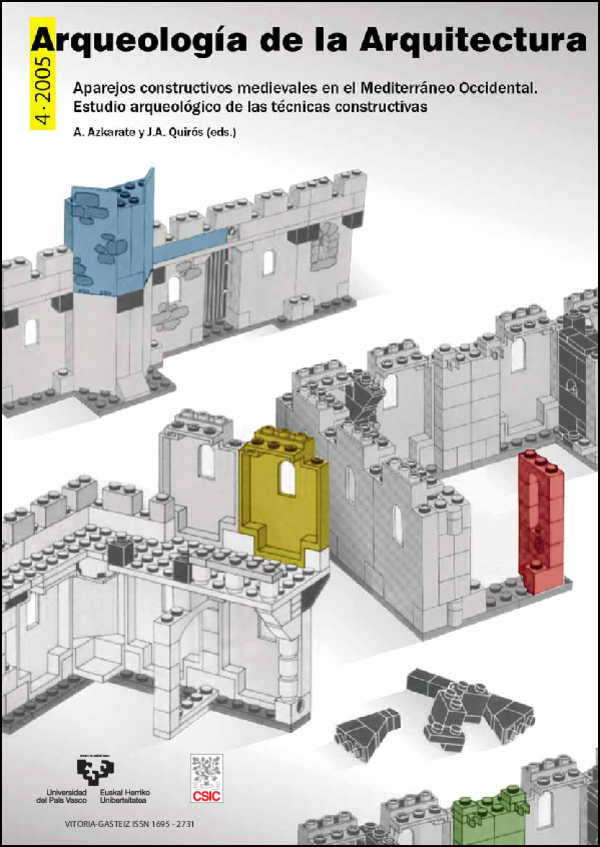Les chantiers de construction de la citadelle de Damas: méthodologie et résultats préliminaires
DOI:
https://doi.org/10.3989/arq.arqt.2005.85Keywords:
Arch, Bossed masonry, Construction economy, Construction technique, Masson’s marks, Military construction, Site organization, VaultAbstract
While much has been published on the architecture of the Citadel of Damascus, construction techniques and the work organisation have never been studied employing the appropriate archaeological methods. The present study deals with the salle à colonnes, connecting the eastern and the northern gate of the citadel and with the south-west building, both dated to the twelfth and thirteenth centuries. It seeks to understand the building from an archaeological approach to monumental architecture, based on the analysis of technical data including dimensions, building materials (principally stone), tools and toolmarks, stone cutting techniques (functional and ornamental), vaulting, geometry, structure of walls, masons marks and reused elements. Except for the establishment of a research method, the preliminary results of this research allow us to state some aspects of the organisation of labour in the citadel of Damascus. This comparison reveals in particular a re-utilisation of the classical building techniques and organisation of labour, with, for example, the presence of teams of specialists working on walls, openings, arches and vaults. These teams of workmen appear to be quite diverse and analysis of their work demonstrates that they had a certain autonomy in their choice of building techniques and in the finishing of stones and masonry.
Downloads
Downloads
Published
How to Cite
Issue
Section
License
Copyright (c) 2005 Consejo Superior de Investigaciones Científicas (CSIC) - Universidad del País Vasco/Euskal Herriko Unibertsitatea (UPV/EHU)

This work is licensed under a Creative Commons Attribution 4.0 International License.
© CSIC. © UPV/EHU. Manuscripts published in both the print and online versions of this journal are the property of Consejo Superior de Investigaciones Científicas and Universidad del País Vasco/Euskal Herriko Unibertsitatea, and quoting this source is a requirement for any partial or full reproduction.
All contents of this electronic edition, except where otherwise noted, are distributed under a Creative Commons Attribution 4.0 International (CC BY 4.0) licence. You may read the basic information and the legal text of the licence. The indication of the CC BY 4.0 licence must be expressly stated in this way when necessary.
Self-archiving in repositories, personal webpages or similar, of any version other than the final version of the work produced by the publisher, is not allowed.















